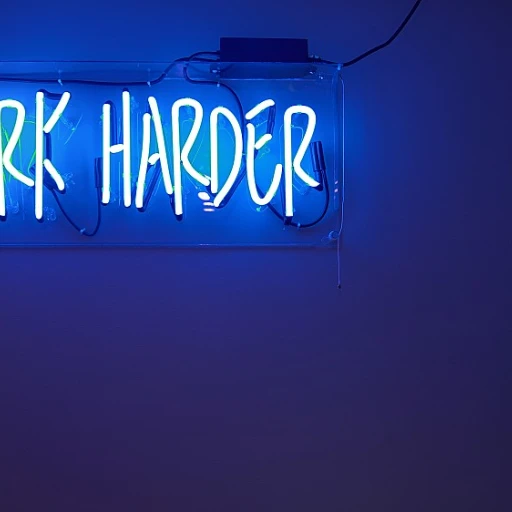-teaser.webp)
Understanding Retail Workforce Dynamics
Exploring the Retail Workforce Landscape
Understanding the complexities of the retail workforce is crucial for effective management. This intricate landscape is shaped by various factors including fluctuating consumer demands, diverse employee roles, and legal compliance requirements. Retailers often face the challenge of balancing labor costs with the need to maintain excellent customer experiences. To achieve this, strategic workforce management becomes an indispensable part of the business strategy.
Employees in the retail sector play critical roles in driving sales and enhancing the customer experience. Their performance directly affects the business's overall success. Therefore, retailers must foster employee engagement and satisfaction to ensure optimal performance. This is not just about individual employee performance but also about how the team functions as a whole, focusing on achieving operational efficiency.
The dynamic nature of this industry demands innovative approaches in employee scheduling and workforce optimization. Retailers must adapt swiftly to real-time changes in consumer traffic to ensure that their workforce is aligned with customer needs. Workforce management solutions, including management software and time tracking tools, provide valuable insights into retail work dynamics, helping businesses to schedule effectively and optimize team performance.
Moreover, understanding labor laws and compliance in the retail sector is vital. Staying informed about legal requirements not only protects the business but also enhances employee trust and satisfaction. By gaining a comprehensive understanding of these dynamics, retailers can craft effective strategies for optimizing their retail workforce management and ultimately, ensure long-term business success.
Strategic Scheduling for Retail Efficiency
Optimizing Retail Operations Through Strategic Scheduling
Strategic scheduling is the backbone of efficient retail workforce management. For retailers, ensuring the optimal number of employees during varying peaks and troughs in store activity is crucial for maintaining a seamless customer experience and controlling labor costs. Understanding the dynamics of retail operations can highlight pressures such as fluctuating customer flow and varying task demands, leading to informed scheduling decisions.
To truly optimize operations, an alignment between business objectives and scheduling practices is necessary. Retailers must consider not only the anticipated retail sales but also the employee satisfaction index. A direct correlation exists between employee engagement and store performance: happy and motivated employees contribute positively to sales and customer satisfaction.
Effective scheduling is not merely about assigning shift timings. It involves using workforce optimization techniques and management software that factors in real-time sales data, time attendance, labor laws, and compliance mandates. These tools, designed with the retail industry's unique requirements in mind, offer solutions for time management and performance enhancement while supporting operational efficiency across the board.
Additionally, demand forecasting is another vital component retail businesses should incorporate. It facilitates proactive scheduling time management, thus minimizing the risk of understaffing or overstaffing. This foresight in scheduling can lead to improved labor cost management and heightened customer experience levels.
Implementing these strategies requires close collaboration with human resources and access to robust management solutions capable of integrating with existing systems. Incorporating a feedback loop from employees can enhance responsiveness and ensure that scheduling considerations remain flexible yet structured. Such management actions will ultimately drive both employee satisfaction and business success.
For a comprehensive guide on developing effective workplace management strategies, read more here.
Leveraging Technology in Workforce Management
Utilizing Advanced Tools for Enhanced Management
In the bustling realm of retail, utilizing cutting-edge technology is essential for optimizing workforce management, ultimately benefiting both the business and its employees. Leveraging technology not only enhances operational efficiency but also ensures that retailers can maintain a consistent customer experience. With advancements in workforce management software, businesses have powerful resources at their disposal.
One of the key aspects of technology in this sphere is real-time software solutions. These tools offer businesses the ability to monitor and manage employee performance, facilitate effective time management, and track employee engagement. Technology plays a pivotal role in scheduling, ensuring that the right number of employees are available during peak hours, thus optimizing labor costs and enhancing customer satisfaction.
Improving Employee and Store Efficiency
Retailers need to embrace software that not only supports time attendance but also aids in demand forecasting. Proper scheduling time management is crucial to prevent understaffing or overstaffing, which can respectively lead to poor customer service or unnecessary expenditure on labor. Retailers can adopt task management tools to optimize work and streamline store management, allowing employees to focus on sales and the overall customer experience.
By incorporating technology-driven solutions, businesses can ensure compliance with labor laws and facilitate employee satisfaction. These technologies provide a foundation for nurturing talent, as continuous performance monitoring helps in identifying areas that require improvement, making training and development more targeted and efficient.
Training and Development for Retail Staff
Investing in Employee Skills and Knowledge
In the retail industry, having a well-trained and knowledgeable workforce is crucial to delivering excellent customer experiences and driving sales. Training and developing staff can significantly impact employee performance and satisfaction, ultimately supporting the overall business goals. Retailers must ensure that their employees are equipped with the necessary skills to effectively perform their roles. This involves regular training sessions focusing on product knowledge, customer service skills, and compliance with labor laws. Incorporating time management and task management into training programs can also enhance operational efficiency. Moreover, leveraging workforce management software can streamline the training process. These tools can facilitate real-time tracking of training programs, helping retailers identify skill gaps and align development initiatives with business needs. By keeping employees up-to-date with the latest knowledge and trends, retailers can improve employee engagement and optimize their workforce. Continuous learning should be encouraged within the team, fostering an environment where staff are motivated to grow and develop over time. This not only enhances employee satisfaction but also reduces labor costs by increasing retention rates and minimizing the need for constant hiring. In addition, investing in training ensures that employees comply with industry standards and regulations, protecting the business from potential compliance issues. As the retail landscape continues to evolve, a focus on training and development will be fundamental to maintaining a competitive edge."Balancing Flexibility and Structure
Achieving the Ideal Balance in Retail Workforce Management
Balancing flexibility and structure is pivotal in optimizing workforce management within the retail industry. For retailers, achieving this harmony means efficiently aligning employee needs with store demands, ultimately enhancing customer experience and operational efficiency. Retailers must be attuned to the nuances of labor laws and employee rights. Human resources teams are tasked with ensuring compliance while crafting employee schedules that respond effectively to fluctuating business demands. A well-considered approach to scheduling time, where both employee satisfaction and sales performance are prioritized, is increasingly being favorably viewed. Leveraging workforce management software can provide real-time data, facilitating dynamic adjustments that match the ebb and flow of customer traffic, thereby optimizing labor costs.Implementing Flexible Workforce Strategies
To support a balanced workforce, innovative scheduling tools can be applied, allowing employees to indicate their preferred working hours. This strategy not only nurtures a positive work culture but also boosts employee engagement. Aligning employee preferences with demand forecasting tools ensures adequate staffing, thereby enhancing store performance during peak periods. Furthermore, the integration of time attendance systems allows for precise tracking of hours worked, aiding in labor cost management. Retailers can better assess the effectiveness of shift patterns and make data-driven decisions to improve workforce optimization without undermining employee satisfaction.Establishing Clear Communication Channels
Open communication is critical. By establishing clear communication channels, management can better elucidate expectations, work schedules, and performance metrics. This transparency fosters trust and empowers employees to contribute to task management solutions more effectively. Clear communication also plays a crucial role in understanding and reacting to employee grievances, thereby reducing turnover rates and fostering an environment that upholds the company's strategic goals. In conclusion, balancing flexibility and structure within retail workforce management requires an astute application of strategic scheduling principles, coupled with smart use of technology and a robust approach to communication. Together, these elements ensure the retail team remains agile, competent, and aligned with the store's operational needs.Measuring Success in Workforce Management
Evaluating Workforce Management Success
Pursuing optimal efficiency and maximized sales is a crucial aim for any retail operation, and measuring the success of workforce management practices is an indispensable part of this pursuit. Knowing whether your retail strategy effectively meets the needs of both the team and the business starts with setting clear performance indicators. Measuring success in workforce management involves numerous metrics, each providing valuable insights into different areas of operation:- Employee Performance and Engagement: Tools such as time tracking and task management systems help gauge employee engagement and performance. Monitoring these factors not only improves individual productivity but also enhances customer experience and satisfaction across the store.
- Operational Efficiency: The application of advanced scheduling time solutions and labor forecasting can streamline workforce optimization efforts. Effective scheduling ensures that employees are available in real time to meet peak customer demands, thereby maintaining high operational standards.
- Compliance and Labor Costs: In the retail industry, compliance with labor laws is non-negotiable. Monitoring compliance through management software ensures adherence to regulations, which can mitigate potential legal issues and control labor costs.
- Retail Workforce Flexibility: Balancing structure and adaptability is critical to workforce management. Measuring the effectiveness of workplace flexibility can be achieved by reviewing employee satisfaction scores and evaluating the adaptability of the scheduling mechanisms implemented.














